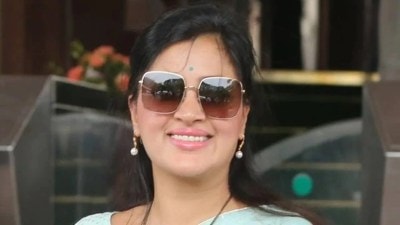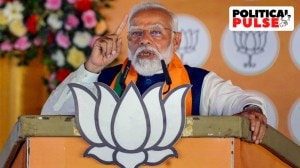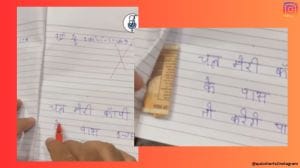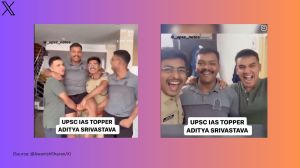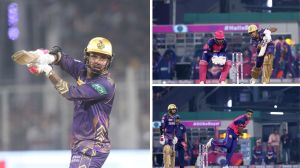- India
- International
Nowhere Woman
The pets meandering aimlessly in Night Noon, for instance, become symbols of this disorientation.
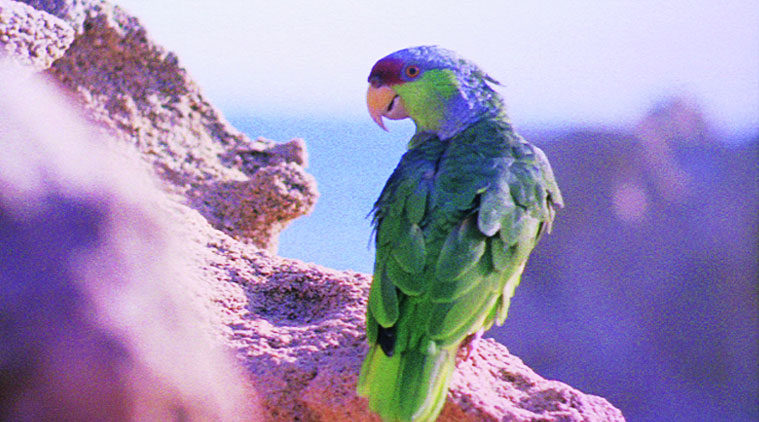 Displacement is a recurring theme in Shambhavi Kaul’s films; her work has been screened at international film festivals.
Displacement is a recurring theme in Shambhavi Kaul’s films; her work has been screened at international film festivals.
In Shambhavi Kaul’s Scene 32, the Rann of Kutch is captured in breathtaking wide-angle shots and extreme close-ups. But the barren stretch of land is unrecognisable. The HD video is intercut by black-and-white visuals of the place and an abstract image. Kaul, who was born on a film set in the Indian desert, wanted to explore the notion of origins and birthplaces by getting closer to the place of her birth.
Kaul’s abstract image is a photogram — taken without a camera by placing objects, in this case salt crystals from the desert, directly on photosensitive film while exposing the film to light. A makeshift darkroom was built in the desert where she processed all the black-and-white film.
In another piece by the experimental filmmaker, Night Noon, unlikely characters, such as a pet dog and a green parrot, wander about in the Sonoran deserts of North America.
These short, experimental films, which play on loop simultaneously at Jhaveri Contemporary, Walkeshwar Road, as part of the show titled “Lunar State”, have emerged from the same seed of thought that dominates much of Kaul’s works: the idea of displacement, the state of being nowhere. It probably has to do with the fact that Kaul now lives between North Carolina and Mumbai. “It is at least partly the result of living out some of the most meaningful aspects of my life on platforms such as Skype,” she says, “There is a kind of disorientation that is particular to our times.”
The pets meandering aimlessly in Night Noon, for instance, become symbols of this disorientation. “It is no longer clear where dogs or green parrots come from or if they could be said to be native to any place. They seem to appear suddenly, as pets, in diverse and sometimes strange locations,” says the filmmaker, in an email interview from the US.

In a way, Kaul’s films are a blend of art and cinema. It makes sense that her first show in Mumbai — a city she was raised in and calls “home” — is the first time that her avant-garde shorts, usually screened at film festivals in the US and Europe, are being shown in a gallery space. The filmmaker says she is still thinking about the implications on the interpretation of her work with a changed viewing space. “It’s the first time I’ve had to consider, or have had the resources to consider, every detail of the presentation of my work. From the size and placement of the projection to the actual projector,” says the filmmaker, who has exhibited her work worldwide at venues such as the Berlinale, the Toronto International Film Festival, The New York Film Festival, and the London Film Festival, among others. For her show at Jhaveri, on till December 6, Kaul worked closely with Priya Jhaveri, co-director of the gallery, to transform it from “an open space with pouring light to a darkened interior suitable for watching films”.
Kaul’s work resists easy description and classification” says Jhaveri, “marrying abstraction with narrative threads in compositions that are fantastical and hauntingly familiar. Her films are sensuously textured, perfectly paced and deeply magical”.
It is not surprising that Kaul’s artistic ambitions have followed the same path as her father’s. Growing up under the influence of Mani Kaul, a pioneer of avant-garde Indian cinema, known for his highly experimental films, shaped her sensibilities. “As a child, I was not allowed to watch popular movies. My father was quite particular about this. I grew up watching European and Russian avant-garde cinema as well as being exposed to a lot of discussion on the medium. Later, this led me to have a rebellious interest in all things popular.
Luckily, I also have a natural affinity to experimental, art and artist’s cinema,” she says.
She first worked as an art director and later as an editor for a number of films before she found her voice as a filmmaker. Kaul says her films are a process of self-exploration — she starts with an idea, place or scene and develops her project from there. It’s through the use of varied cinematic techniques and media that Kaul tries to find answers to questions that often revolve around ideas of identity, culture and politics.
sankhayan.ghosh@expressindia.com
Apr 16: Latest News
- 01
- 02
- 03
- 04
- 05











